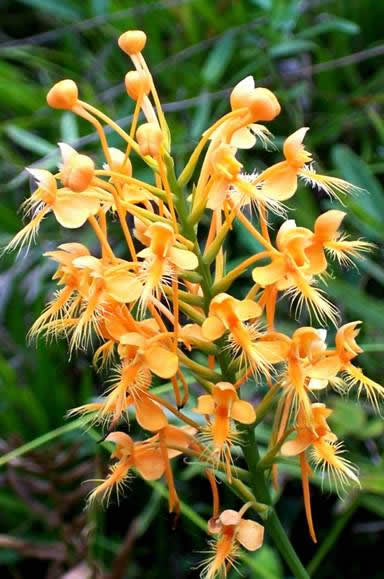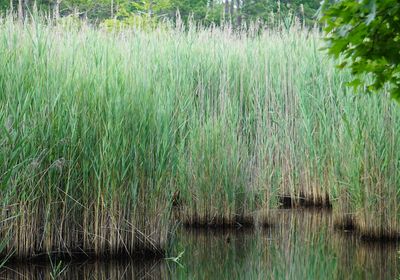From researchers to botanists, the pervasive method of plant identification has relied heavily on the observation of physical characteristics. The outward appearance of an organism, or phenotype, is determined in large part by genotype, an organism’s genetic makeup (Editors, 2018). Therefore, ecological identifications often go unchallenged, and genotype is assumed based on phenotypic classification. Physical characteristics, such as color or size, are regarded as fundamental to the identity of most species, despite the subjectivity of these observations. Molecular ecologists sought to examine this reality, in conjunction with their analysis of speciation, in their 2023 study focused on East Coast orchids (Evans et al., 2023).
National Geographic defines a species as a “group of organisms that can reproduce naturally with one another and create fertile offspring” (National Geographic Society, 2023). However, this is not always what occurs in the natural world. In rare instances, two individuals of differing species may reproduce, generating progeny that are often sterile: a phenomenon defined as “hybridization”. This study, conducted by Evans et al., investigates a novel case of this cross species reproduction among the Platanthera blephariglottis, Platanthera cristata, and Platanthera ciliaris species.
Researchers had observed that several Platanthera orchid species often grow in close proximity to each other. In these locations of overlap, plants with distinct characteristics of multiple separate species are present. This has led many to conclude, based on visual classification, that these individuals are hybrids. Historically, crosses between P. blephariglottis and P. christata have been defined as P. x canbyi, while offspring between P. blephariglottis and P. ciliaris have been defined as P. x bicolor (Figure 1). Though the crosses have been assumed based on the intermediate nature of their structures, this tells scientists little about what is happening at the molecular level. As such, they aimed to answer three questions through their work: Are these organisms truly hybrids? Which species cross? Do the genetic results match their phenotypically assigned species?

To answer these, researchers ran tests to compare phenotypic classifications with genetic composition. They began by measuring physical characteristics (morphology), such as flower width, and averaging this data among each assigned species identity (Figure 2). DNA samples were then extracted, enabling each plant to be sequenced and sorted based on genetic composition. Overlaying the DNA samples with their paired physical measurements, researchers could see clearly the degree to which their classifications matched a plant’s genetic code.

After performing these tests, researchers found that each species maintained distinct morphological measurements, with the presumed hybrid offspring sorting independently between the appropriate parents. Results also demonstrated that in locations where both parents were not present, the phenotypic intermediaries disappeared. These plants are true hybrids. Yet, this is not to assert that all previous assumptions were found to be flawless. It was also revealed that researchers had genotypically misclassified several samples: many of the plants initially categorized as P. ciliaris were actually P. x bicolor hybrids, and some of the collected plants were either backcrosses (genetic products of a hybrid and pure species) or the offspring of two hybrids.
On the molecular level, they discovered that genes flowed more freely between P. blephariglottis and P. ciliaris, with P. cristata remaining more distinct. There are several potential factors influencing this semipermeable barrier to hybridization, with physical structure and typical pollinators being the most instrumental. Because both P. blephariglottis and P. ciliaris are consistently pollinated by swallowtail butterflies, their cross P. x bicolor is rather common. P. x canbyi, whose parents are only occasionally pollinated by bumblebees, is much less frequent. This distinction in pollination is due to the specialized reproductive structures tailored to each organism, which also act as a barrier to hybridization morphologically.
Hybridization maintains the potential to introduce adaptive genes or advantageous characteristics, but it also has the potential to erode the genetic makeup of a species. Posing a threat to rare or endangered individuals, crossing in this manner comes with the risk of producing an unhelpful or potentially detrimental recombination of alleles. This study demonstrated that phenotypic characteristics are not a reliable form of species identification in the field, and challenges the validity of past ecological research. If phenotype is not a reliable form of identification, how many studies might have been based on an ill informed set of genotypic presumptions? These orchids also defy the dominant definition of a distinct species, as they freely reproduce and cross, creating valid intermediates. By reproducing across species lines, these plants subvert typical notions of biological concreteness and lead us to wonder: how much do we truly know about the natural world?
Works Cited
Editors, B. D. (2018, March 27). Genotype vs. Phenotype. Biology Dictionary. https://biologydictionary.net/genotype-vs-phenotype/
Evans, S. A., Whigham, D. F., Hartvig, I., & McCormick, M. K. (2023). Hybridization in the Fringed Orchids: An Analysis of Species Boundaries in the Face of Gene Flow. Diversity, 15(3), Article 3. https://doi.org/10.3390/d15030384
National Geographic Society. (2023, October 19). Species. National Geographic. https://education.nationalgeographic.org/resource/species


